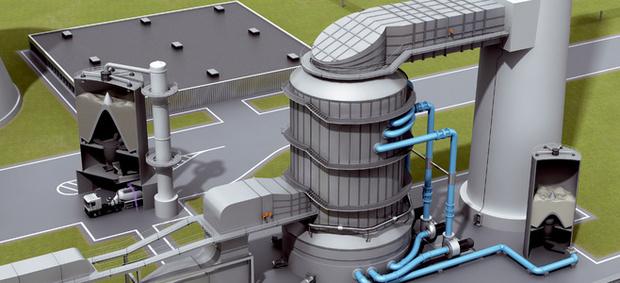Introduction
The Flue Gas Treatment System Market is expanding steadily as global industries adopt advanced emission control technologies to comply with stricter environmental regulations. Flue gas treatment systems are essential in power plants, cement factories, chemical plants, metal processing units, and waste incineration facilities to remove pollutants such as sulfur oxides (SOₓ), nitrogen oxides (NOₓ), particulate matter, mercury, and acidic gases from exhaust streams. As countries commit to reducing air pollution and carbon emissions, industries are increasingly investing in efficient and cost-effective flue gas treatment solutions. Technologies such as electrostatic precipitators, flue gas desulfurization (FGD), selective catalytic reduction (SCR), fabric filters, and activated carbon systems are playing a significant role in enabling cleaner industrial operations.
Market Drivers
The primary driver of the Flue Gas Treatment System Market is the growing enforcement of environmental standards and emission control regulations worldwide. Rising concerns about air pollution, climate change, and public health have compelled industries to upgrade their pollution control systems. Rapid industrialization in developing economies and modernization of aging thermal power plants in developed regions contribute to higher demand for advanced treatment technologies. The shift toward cleaner energy production and the growing need to manage industrial waste combustion are boosting adoption of flue gas systems. Additionally, increasing investment in cement, steel, and chemicals sectors—known for high emissions—further strengthens market growth. Technological advancements in catalytic processes, multi-pollutant control systems, and energy-efficient filtration methods are enabling more reliable and cost-effective air quality solutions.
Market Challenges
Despite strong demand, the Flue Gas Treatment System Market faces challenges like high installation and maintenance costs. Advanced systems such as SCR or wet FGD require significant capital investment, which can be a barrier for small and medium industries. Operational issues such as system corrosion, reagent handling, and sludge disposal present additional challenges. Variability in fuel quality—especially in coal-based industries—affects system efficiency and pollutant removal consistency. Industries may also face downtime during installation or retrofits, impacting productivity. Regulatory inconsistencies across regions create complexity for global manufacturers. Furthermore, the shift toward renewable energy sources could gradually reduce long-term demand from coal-fired power plants, pushing manufacturers to diversify into new application areas.
Market Opportunities
The Flue Gas Treatment System Market presents substantial opportunities driven by innovation, regulatory trends, and industrial growth. The increasing adoption of multi-pollutant control systems—capable of removing SOₓ, NOₓ, and particulates simultaneously—offers cost-effective solutions for industries seeking comprehensive emission control. The transition to low-carbon and hydrogen-based industrial processes opens new prospects for advanced treatment systems adapted for alternative fuels. Digital monitoring and predictive maintenance technologies can optimize system performance and reduce downtime, creating new service-based revenue streams. Growing municipal waste incineration and biomass power generation projects also require reliable flue gas cleaning systems. Retrofitting old plants with modern, high-efficiency systems represents a large market opportunity, especially in Asia-Pacific and North America.
Regional Insights
Asia-Pacific dominates the Flue Gas Treatment System Market due to rapid industrial expansion and strong government initiatives aimed at reducing industrial emissions. China leads the market with extensive deployment of FGD, SCR, and particulate control technologies in its power and manufacturing sectors. India is also experiencing growth due to national emission control mandates for thermal power plants. Europe follows, driven by stringent air quality regulations under the Industrial Emissions Directive (IED). Germany, the UK, and Italy are major contributors adopting advanced systems across power, waste management, and manufacturing sectors. North America shows steady demand due to strict EPA regulations and significant investments in emissions control technologies. The Middle East is emerging as a key region for flue gas treatment due to expanding petrochemical and metal industries.
Future Outlook
The future of the Flue Gas Treatment System Market will be shaped by cleaner technologies, digitization, and evolving industrial energy systems. Hybrid systems that combine catalytic, particulate, and desulfurization processes will become more common as industries aim for comprehensive compliance. Innovations in chemical sorbents, membrane filtration, and plasma-based treatment methods will enhance pollutant removal efficiency and reduce operational costs. Integration of digital twins, AI-based diagnostics, and real-time emission monitoring will improve reliability and help industries meet regulatory audits. As hydrogen and alternative fuels gain global traction, flue gas systems will evolve to accommodate new combustion characteristics. While coal power may decline, growth in waste-to-energy, biomass, and industrial manufacturing will sustain demand for advanced flue gas treatment solutions.
Conclusion
The Flue Gas Treatment System Market is expanding as industries adopt advanced technologies to minimize emissions and comply with environmental standards. Despite challenges related to cost and operational complexity, continuous innovation in multi-pollutant control, digital monitoring, and high-efficiency filtration is driving market progress. Flue gas treatment systems are becoming essential components for industries seeking sustainable and compliant operations. Companies that focus on innovation, integrated system design, and service-based solutions will lead the next phase of market growth. As global efforts to reduce pollution intensify, flue gas treatment systems will remain critical to cleaner industrial production.

